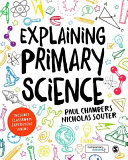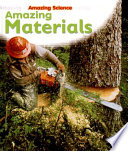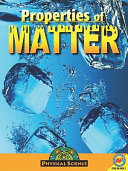Listed below are selected teacher resources, picture books, fiction, and non-fiction related to matter.
Teacher Resources
 Properties of Matter for Grades K-2: An Inquiry Approach
Properties of Matter for Grades K-2: An Inquiry Approach
by Jennifer Lawson
Grades: K-2
This book covers how to teach about matter in alignment with the current BC curriculum. Uses the Know-Do-Understand model, First Peoples Principles of Learning, and an inquiry approach. Part of the Hands-on Science series.
 Hands-on physical science activities for grades K-6
Hands-on physical science activities for grades K-6
by Marvin N. Tolman
Grades: K-6
This book’s activities follow the discovery/inquiry approach and encourage students to analyze, synthesize, and infer based on their own hands-on experiences. Topics include the nature of matter, energy, light, sound, simple machines, magnetism, static electricity, and current electricity.
by Paul Chambers and Nicholas Souter
Grades: K-6
The authors cover all the major areas of science relevant for beginning primary/elementary school teachers, explaining key concepts from the ground up. Topics include forces, matter, energy, biodiversity and ecosystems, water, light, sound, and more.
 The really useful science book: Framework of knowledge for primary teachers
The really useful science book: Framework of knowledge for primary teachers
by Steve Farrow
Grades: K-6
A practical guide to science in the primary classroom which includes key ideas, related science concepts, and everyday activities to solidify concepts. The book is broken into three sections, life and living processes, materials and their properties, and physical processes, and is especially useful for non-specialists. Also available as an eBook, here.
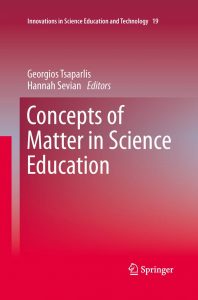 Concepts of matter in science education
Concepts of matter in science education
edited by Georgios Tsaparlis and Hannah Sevian
Grades: K-12
This text provides a science education perspective on the teaching and learning of particulate and structural concepts of matter from Pre-K through higher education, with reviews and analyses of current literature as well as previously unpublished research. eBook only.
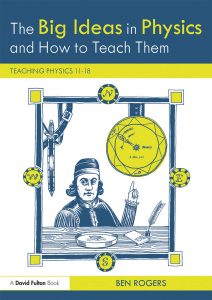 The big ideas in physics and how to teach them: Teaching physics 11-18
The big ideas in physics and how to teach them: Teaching physics 11-18
by Ben Rogers
Grades: 7-12
Each chapter of this book provides the historical narrative behind a Big Idea, explaining its significance, the key figures behind it, and its place in scientific history. Accompanied by detailed ready-to-use lesson plans and classroom activities, the book contains not only a thorough explanation of physics, but also the applied pedagogy to ensure its effective translation to students in the classroom. Each of the five big ideas in physics are covered in detail: electricity, forces, energy, particles, and the universe. eBook only
Picture Books
 Joe-Joe the wizard brews up solids, liquids and gases
Joe-Joe the wizard brews up solids, liquids and gases
written by Eric Braun, illustrated by Robin Boyden
Grades: K-3
Joe-Joe the student wizard has a problem: he tried to turn his homework into chocolate bars but instead transformed it into syrup! What can he do to set matter(s) right?
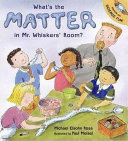 What’s the matter in Mr. Whisker’s room?
What’s the matter in Mr. Whisker’s room?
written by Michael Elsohn Ross, illustrated by Paul Meisel
Grades: K-3
Follow Mr. Whisker and his students as use their sense to make observations and draw conclusions at seven stations all about matter. Includes activities and instructions at the back.
Non-Fiction
 Looking at solids, liquids and gases: How does matter change?
Looking at solids, liquids and gases: How does matter change?
by Jackie Gaff
Grades: 2-4
This book explores the different states of matter and how factors such as temperature and pressure can change solids to liquids to gases and back again. Explains freezing, melting, evaporation, and condensation.
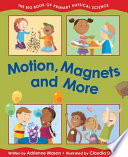 Motion, magnets and more: The big book of primary physical science
Motion, magnets and more: The big book of primary physical science
written by Adrienne Mason, illustrated by Claudia Dávila
Grades: K-6
Where do the bubbles come from in a piece of cake? Why do triangles make a structure stronger? And how come magnets don’t stick to the wall? This introduction to the physical sciences gives young readers an easy-to-understand overview of such concepts as materials, forces, structures, solids, liquids and gases.
by Sally Hewitt
Grades: 3-6
This book introduces children to the concepts of solid, liquid, and gas, as well as to the different kinds of materials that things are made from. Photographs help show how things can change shape, which materials are natural and which are man-made, and which kind of materials can be recycled and why.
by Molly Aloian
Grades: 4-6
What is matter made of? Young readers will be amazed to learn about the tiny particles that make up everything from this book to their very own bodies. Topics include the discovery of the atom, the parts of an atom, how atoms combine to form molecules, and how atoms relate to elements and the periodic table.
by Aaron Carr and Lesley Evans Ogden
Grades: 4-6
What’s the matter? Almost everything we can see and touch around us is matter, that’s what! This book explores some of matter’s amazing properties that are studied in the physical sciences.
by Lynette Brent
Grades: 4-6
This book will give readers a deeper understanding of the different states of matter. Topics include understanding matter, mass, volume, and density; differences between solids, liquids, and gases; how matter passes from one state to another; and properties of matter, such as hardness and viscosity.
Finding More Resources
To find more resources in this area, try the following:
- Search using the General tab on the UBC Library website to look for material in all UBC Library branches.
- Search using “Search Education Resources” box in the left hand bar on the Education Library website to limit your results to materials in the Education Library.
- Use specific search terms to narrow your results, such as “matter–properties–juvenile literature”, “inclusion”, “equitable”, “diversity”, or “supportive”.
- To find lesson plans, include “lesson plans”, “lesson planning”, or “activity programs” in your search terms.
For more help with searching, please visit the Library Service Desk or e-mail ed.lib@ubc.ca.
